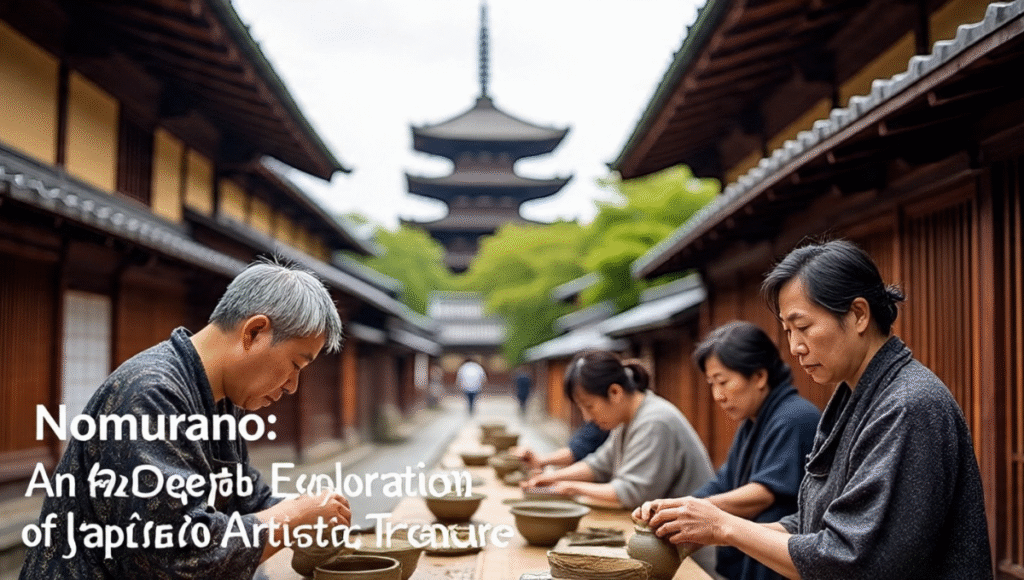Introduction
Nestled within the vibrant cultural tapestry of Japan, Nomurano is a name synonymous with exquisite craftsmanship, artistic tradition, and cultural heritage. Known primarily for its legendary glasswork, Nomurano has established itself as a symbol of Japan’s refined artistry and innovation in the decorative arts. This article provides a comprehensive overview of Nomurano, tracing its origins, historical development, artistic significance, and contemporary influence.
Origins and Historical Background
The Birth of Nomurano Glass Art
Nomurano, often referred to simply as “Nomurano Glass,” originated in the late 19th century during Japan’s Meiji era, a period marked by rapid modernization and an openness to Western influences. Located in the city of Tokyo, specifically within the district of Ginza and other artisan neighborhoods, Nomurano’s roots are deeply embedded in the Japanese tradition of craftsmanship and aesthetic sensibility.
The development of Nomurano glass was inspired by both traditional Japanese art forms and Western glassmaking techniques introduced through trade and cultural exchange. The fusion of these influences created a unique style that combined delicate craftsmanship with innovative design.
Early Development and Influences
During the early 20th century, Japanese artisans in Nomurano began experimenting with glass-blowing and decorative techniques, blending European styles with Japanese motifs. The artisans sought to produce items that were not only functional but also highly artistic—ranging from intricate vases and lanterns to jewelry and ornaments.
The region became a hub for glass artisans who formed workshops and guilds, passing down knowledge through generations. This collaborative environment fostered innovation, leading to the development of distinct styles that characterized Nomurano’s signature aesthetic.
Artistic Characteristics and Techniques
Signature Styles
Nomurano glass is renowned for its vibrant colors, intricate designs, and craftsmanship that embodies both traditional Japanese aesthetics and Western influences. Key features include:
- Vivid Colors: Use of bright, bold hues such as reds, blues, greens, and golds.
- Intricate Detailing: Emphasis on fine craftsmanship with detailed patterns inspired by nature, mythology, and Japanese folklore.
- Layered Glass: Techniques like layering and etching to create depth and texture.
- Innovative Forms: A blend of traditional shapes with modern, artistic interpretations.
Techniques and Methods
Nomurano artisans employ a variety of techniques, including:
- Glass Blowing: Crafting delicate and complex shapes from molten glass.
- Lampworking: Creating detailed figures and ornaments by shaping glass with a torch.
- Etching and Engraving: Adding fine details and patterns to glass surfaces.
- Color Application: Using metallic oxides and dyes to produce rich, durable colors.
These methods require exceptional skill, patience, and precision, making each piece a testament to the artisan’s expertise.
Cultural Significance and Symbolism
Representation of Japanese Aesthetics
Nomurano glass reflects core elements of Japanese aesthetics such as wabi-sabi (beauty in imperfection), mono no aware (the transient nature of things), and a deep appreciation for nature. Many pieces depict motifs like cherry blossoms, cranes, waves, and landscapes, symbolizing beauty, longevity, and resilience.
Religious and Cultural Uses
Historically, Nomurano glass was used in religious ceremonies, temple decorations, and as offerings. Over time, it became popular as decorative art in homes, hotels, and public spaces, symbolizing elegance and cultural pride.
Artistic Heritage and Preservation
The craftsmanship of Nomurano is considered a cultural treasure, with artisans adhering to traditional techniques while also innovating to meet modern tastes. The preservation of this craft is supported by local guilds, museums, and cultural institutions dedicated to maintaining Japan’s glassmaking heritage.
Modern Era and Global Recognition
Post-War Revival and Commercial Expansion
After World War II, Nomurano experienced a revival as Japan’s economy grew and international interest in Japanese arts increased. Workshops expanded their reach, and exports of Nomurano glass became significant. The establishment of dedicated workshops and stores in Tokyo, Kyoto, and beyond helped popularize their works globally.
Contemporary Artists and Innovations
Today, Nomurano continues to thrive as both a traditional craft and a dynamic art form. Modern artisans incorporate new materials, techniques, and designs, blending tradition with contemporary aesthetics. Some notable trends include:
- Collaborations with Designers: Working with fashion and interior designers to create bespoke pieces.
- Sustainable Practices: Emphasizing eco-friendly materials and methods.
- Limited Edition Collections: Offering exclusive pieces that appeal to collectors worldwide.
International Presence and Cultural Diplomacy
Nomurano glass has gained recognition in international art fairs, galleries, and museums. It serves as a cultural ambassador for Japan, showcasing the country’s artistic ingenuity and dedication to craftsmanship.
Notable Places and Events
Nomurano Workshop Districts
- Ginza and Asakusa: Popular destinations for tourists seeking authentic Nomurano glassworks.
- Tokyo Glass Art Museum: Exhibits collections of traditional and contemporary Nomurano pieces.
Festivals and Exhibitions
Annual events such as the Tokyo Glass Art Festival celebrate the craft, featuring live demonstrations, exhibitions, and sales of exclusive works.
Future Perspectives
The future of Nomurano lies in balancing tradition and innovation. Efforts are underway to:
- Train new generations of artisans.
- Incorporate modern design elements.
- Expand global markets through online platforms.
- Promote cultural exchange programs.
These initiatives aim to ensure that the legacy of Nomurano continues to flourish well into the future.
Conclusion
Nomurano stands as a shining example of Japan’s rich artistic heritage, embodying a harmonious blend of tradition, innovation, and cultural symbolism. Its exquisite glassworks continue to enchant collectors, art enthusiasts, and cultural connoisseurs worldwide, serving as a testament to the craftsmanship, aesthetic sensibility, and creative spirit of Japanese artisans. As Nomurano evolves and adapts to contemporary tastes, it remains an enduring symbol of Japan’s artistic excellence and cultural resilience.
